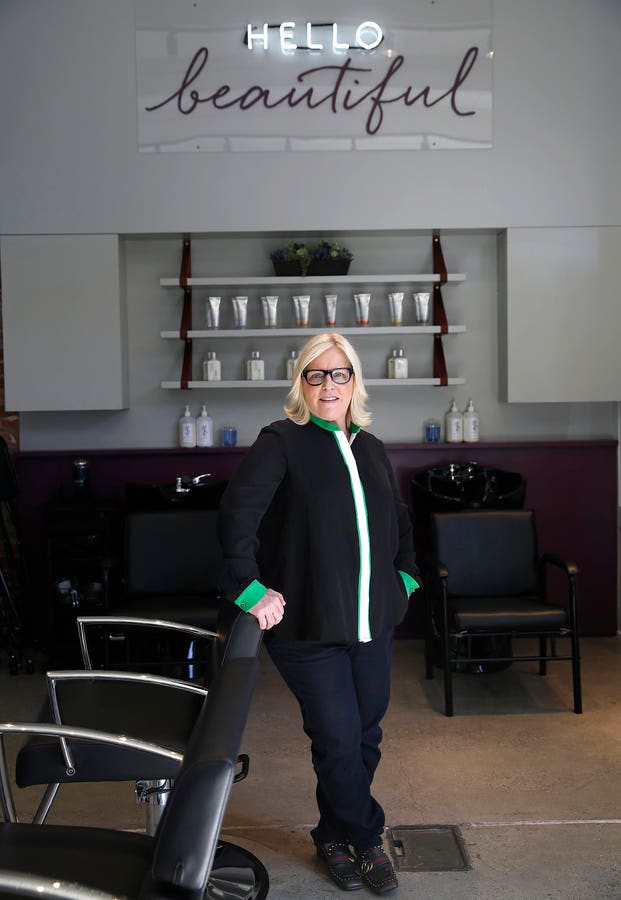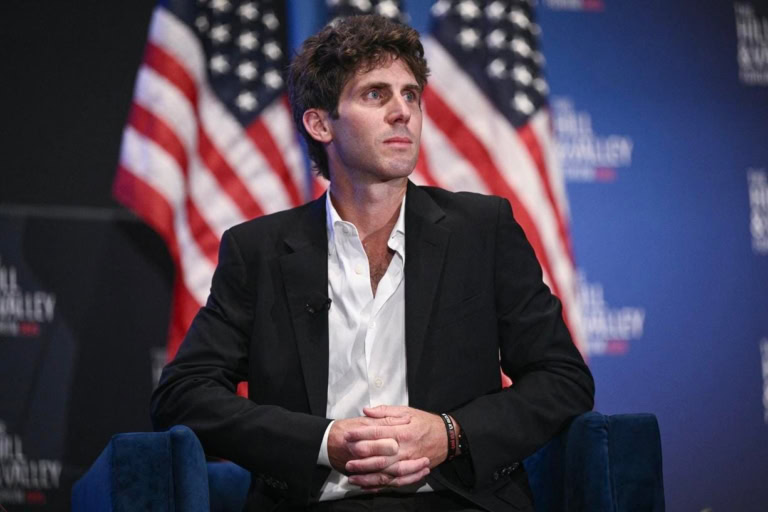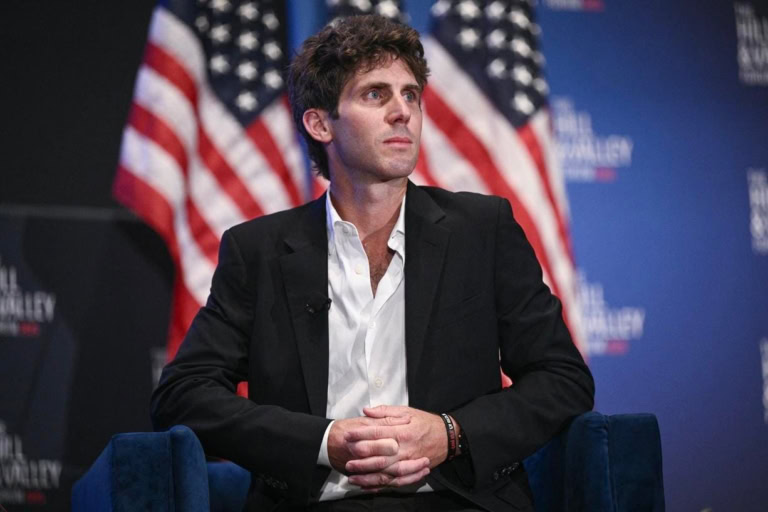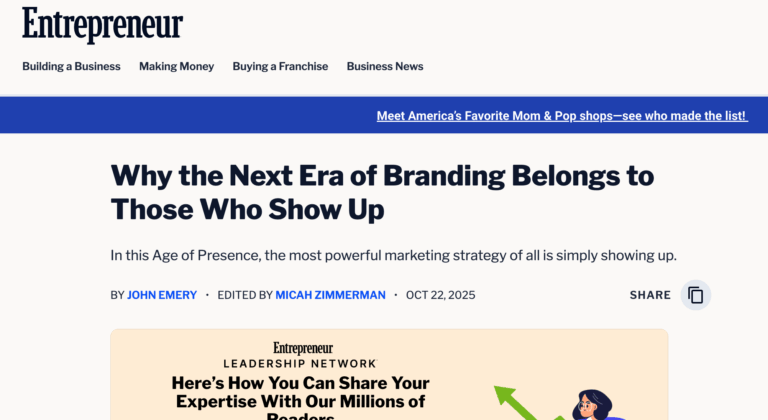Madison Reed is rolling out an agentic-AI concierge to boost bookings and product discovery—on top of a hair-color subscription engine that’s almost as sticky as GLP-1s, without the friction of a prescription. With more than $250 million in funding, a growing retail footprint, and a founder who is a VC and former partner of Howard Schultz of Starbucks and Maveron fame, an IPO trajectory reminiscent of Oddity Tech is no longer far-fetched.
Smart 8 Free Hair Color Pioneer
Before Madison Reed became an AI-powered beauty-tech contender, it disrupted a far more analog space: hair dye. When the company launched in 2013, it was the first to bring ammonia-free hair color to scale—free of PPD, resorcinol, and parabens.
At a time when ingredient transparency was rare, Madison Reed’s Radiant Hair Color Kit introduced a new standard for performance and wellness in the at-home color category. It wasn’t just better for consumers—it redefined what “premium” could mean in a mass beauty market.
That early commitment to ingredient transparency became the foundation for everything that followed: personalization, digital tools, and now, AI. Madison Reed didn’t just make color safer—it made it smarter.
The New Retail OS Is Part Human, Part Agent
Beauty has had chatbots and AR try-ons for years. What’s new—and potent—is agentic AI: autonomous assistants that don’t just recommend but act. Madison Reed’s newly unveiled agent, Madi, does exactly that—automating consultations, scheduling appointments, and guiding customers from digital discovery to physical salons.
Early data shows Madi doubles the likelihood that a site visitor books at one of Madison Reed’s 95+ Hair Color Bars. It also handles most support queries, freeing stylists to focus on in-person services. Crucially, Madi was built to support, not replace human colorists—a human-centric approach that keeps satisfaction scores high while improving efficiency.
On the backend, Madison Reed uses AI to forecast demand, optimize inventory, and staff salons. Improved utilization has translated directly into higher margins—evidence that agentic AI is more than marketing; it’s operational leverage.
Hair Color Subscriptions Are As Sticky As GLP-1s
Madison Reed’s hair-color model is almost as sticky as GLP-1s—once customers start, the results keep them coming back on schedule. But the parallels go beyond habit. Both categories thrive on predictable replenishment cycles, high retention, and strong unit economics—a dream combination for investors chasing recurring revenue and margin expansion.
According to Fortune Business Insights, the global hair-color market is valued at roughly $25 billion and projected to surpass $40 billion by 2032, while Statista estimates the broader hair-care market exceeds $90 billion worldwide. Within that, the premium segment—which includes salon-grade, and ingredient-conscious formulations like Madison Reed’s—is growing at more than twice the rate of mass hair color, driven by DTC personalization and ingredient transparency.
Like GLP-1s, hair color sits at the intersection of identity and routine—once you begin, continuity becomes part of the value. The difference? Madison Reed’s subscriptions carry none of the regulatory friction or prescription complexity of pharmaceuticals. There are no telehealth consults, insurance hurdles, or refill delays—just a self-directed ritual that renews confidence every few weeks.
Root touch-ups every 3–8 weeks make hair color ideal for subscription. Madison Reed monetizes that cadence through a membership program now representing roughly 70 percent of revenue, with its agentic AI eliminating friction from the process—from precise shade matching to automated refills and salon scheduling.
That combination makes at-home hair color a rare consumer category with GLP-1-level stickiness and SaaS-like repeatability, but without medical overhead. Because results are high-stakes, loyalty is built through trust, not trend. Hair color therefore yields lower churn and higher lifetime value than most beauty categories—a key metric for investors assessing stickiness and scalability.
Beyond Color: Building An Innovative Haircare Ecosystem
From its roots in at-home color, Madison Reed has steadily expanded its product suite to capture every stage of the hair-care cycle—from at-home root touch-ups and styling essentials to treatment innovations like its cult-favorite Bond Building Cleansing Treatment, designed to repair and strengthen color-treated hair.
Together, these extensions have turned the company from a color brand into a full-service hair ecosystem—deepening customer lifetime value and diversifying revenue streams in ways few DTC beauty brands have managed. According to the company, new treatment and technology-driven products are already in development, hinting at another wave of launches that could further integrate AI, personalization, and repair science into its growing portfolio.
Scale, Funding and Footprint
Madison Reed has quietly become a hybrid powerhouse across DTC, retail, and services.
- Hair Color Bars: 95+ company-owned salons nationwide focusing on hair color, with AI routing that allocates bookings and reduces no-shows.
- Retail & E-Commerce: Sold through Ulta Beauty, Target, Walmart, Sally Beauty, and Amazon, alongside its own DTC and subscription site.
- International Expansion: In September 2025, Madison Reed entered Ulta Beauty’s first Mexico City store, bringing total retail doors to 3,800+.
- Funding: PitchBook lists Madison Reed’s total capital raises at $384 million, but that figure likely includes debt and convertible instruments. Other sources (Tracxn, Crunchbase) place the total in the $250–275 million range, suggesting a more conservative equity-only baseline.
Analysts estimate annual revenue surpassed $100 million pre-pandemic and has grown materially since—fueled by hybrid retail recovery and salon expansion.
IPO Watch: The Oddity Tech Playbook
For investors tracking which beauty-tech brands could withstand the scrutiny of public markets, Madison Reed stands out—and its trajectory echoes Oddity Tech (NASDAQ: ODD), the Israeli parent of Il Makiage and SpoiledChild that went public in 2023 at a ~$2.8 billion valuation and surged 35 percent on debut.
More importantly, Oddity Tech remains one of the few profitable beauty companies to list in recent years, generating over $500 million in 2024 revenue and maintaining double-digit EBITDA margins—an anomaly in a category where DTC brands often burn capital chasing scale.
Its AI-first engine, vertical integration, and data discipline are the same pillars now driving Madison Reed. Both brands use predictive analytics to reduce trial risk and maximize conversion, proving that AI can build margin, not just buzz.
Madison Reed, however, adds breadth: digital precision plus retail reach—subscriptions, wholesale, and salon services under one platform.
Public investors would like:
- Recurring revenue (~70%).
- Proven AI impact on bookings and utilization.
- 3,800+ retail doors and 90+ salons.
- A founder who understands capital markets.
If Oddity Tech proved Wall Street will reward profitable AI-led beauty, Madison Reed could be next when the IPO window reopens.
Beauty IPO Scorecard: Post 2020 Reality Check
Data compiled from company filings and FactSet, October 2025.
💡 Investor Lens:
Oddity Tech is the rare profitable disruptor; others show how quickly post-IPO momentum can fade. That contrast makes Madison Reed stand out: AI efficiency + recurring revenue + omni-channel scale = real fundamentals.
The Founder’s Edge: Amy Errett, a Venture Capitalist Who Can Operate
Founder and CEO Amy Errett brings a rare duality—operator and VC. Before launching Madison Reed in 2013, she was a General Partner at Maveron, the consumer VC firm co-founded by Howard Schultz, who also founded Starbucks. Her experience as a consumer-focused VC has instilled a focus on brand experience and scalable culture—principles that anchor Madison Reed today.
Currently, Errett is a Partner at True Ventures, where she focuses on consumer and wellness investments grounded in the same values that define Madison Reed: trust, technology, and long-term customer relationships. Her dual vantage point—as both capital allocator and founder—gives her an uncommon fluency in building companies that can scale responsibly. Through her investing lens, Errett has had deep exposure to what works—and what doesn’t—in consumer tech, from customer acquisition and retention to margin discipline. That pattern recognition gives Madison Reed a strategic advantage: she’s scaling a beauty brand with the rigor of a SaaS company.
She often says Madison Reed is “a human company powered by technology.” That balance—empathy in product, precision in execution—defines her AI strategy. “Madi frees up our people to do what only humans can do: deliver joy, confidence, and care,” she told industry press this year.
Her venture lens shows up in capital structure (non-dilutive debt), channel diversification, and measured international expansion—moves that contrast with the blitz-scale approach that undid many beauty startups.
Competitive Landscape: At-Home Hair Color 2.0
While Madison Reed now dominates premium at-home color, its rise builds on a decade of experiments.
eSalon (acquired by Henkel): 51 % stake (2019, ≈ €90 M). Validated custom-color subscriptions but limited brand heat.
L’Oréal Color&Co (2019–2022): AI consult startup from L’Oréal Tech Incubator; discontinued 2022.
Fekkai (2008 launch): Exited at-home color to refocus on care.
Madison Reed (the playbook in practice): Smart 8 free- formulas free of ammonia and PPD, AI shade matching, hybrid service model. Radiant Hair Color Kit anchors subscriptions and salons.
Distribution Snapshot: 95+ Hair color bars | Ulta, Target, Walmart, Sally Beauty | Amazon | MadisonReed.com | Ulta Mexico (LATAM rollout).
Together these channels form a vertically integrated ecosystem few rivals can match.
Comparative Note: Drybar’s Dual Exit
The closest parallel in haircare may be Drybar, which monetized both sides of its business in separate but lucrative deals. In 2019, Helen of Troy acquired Drybar’s product line for $255 million in cash, calling it “immediately accretive.” Two years later, WellBiz Brands purchased the Drybar salon franchise rights, viewing it as a premium service ripe for growth. The split demonstrated that hybrid models blending product IP and service infrastructure can yield multiple strategic outcomes—a blueprint Madison Reed appears to be evolving toward.
Global Comparison: Josh Wood Colour (U.K.)
Across the Atlantic, Josh Wood Colour attempted a similar digital reimagining of home hair dye. Founded in 2018 by celebrity colorist Josh Wood, the U.K. brand raised about $9 million (Index Ventures, JamJar, Venrex) and saw a 2,638 % sales surge from 2020 to 2021 as lockdowns drove at-home demand.
Unlike Madison Reed, however, Josh Wood Colour remains a niche DTC brand with no AI engine or retail footprint. Its creative pedigree and products like The Miracle Shot additive sustain loyal fans, and Wood continues as Color Visionary for Wella Professionals. But without capital scale or infrastructure, it never converted pandemic momentum into platform growth.
That contrast underscores Madison Reed’s advantage: where many color brands remained artisanal, Madison Reed industrialized the category.
Next Steps: IPO, Expansion, or Strategic Patience?
As Madison Reed continues scaling, three paths appear viable:
- IPO Readiness: EBITDA positive and growing margins, strong recurring revenue, and investor-friendly metrics, the company is a logical candidate for a 2026 or 2027 IPO—particularly if beauty-tech valuations rebound following Oddity Tech’s success.
- International Expansion: The brand’s entry into Ulta Mexico could foreshadow broader expansion across Latin America, the U.K., or the Middle East—markets where at-home color and salon-hybrid models are gaining traction.
- Strategic Patience: Remaining private could allow Madison Reed to deepen its AI moat, refine salon economics, and strengthen its recurring revenue base before subjecting itself to public-market volatility.
For now, Amy Errett appears to be keeping her options open. Madison Reed’s business is not just performing—it’s compounding.
The Bottom Line
Madison Reed isn’t just digitizing hair color—it’s redefining how beauty brands scale. By pairing a sticky subscription substrate with a human-AI hybrid retail model, the company has built something rare in consumer tech: predictable revenue, diversified channels, and true operating leverage.
With more than $250 million raised, national retail reach, and a founder who thinks like an investor, Madison Reed is positioning itself as the Oddity Tech of hair color—a beauty-tech contender ready for the public markets and the next era of intelligent retail.
If Oddity Tech proved AI can make beauty profitable, Madison Reed may prove it can make it scalable.















